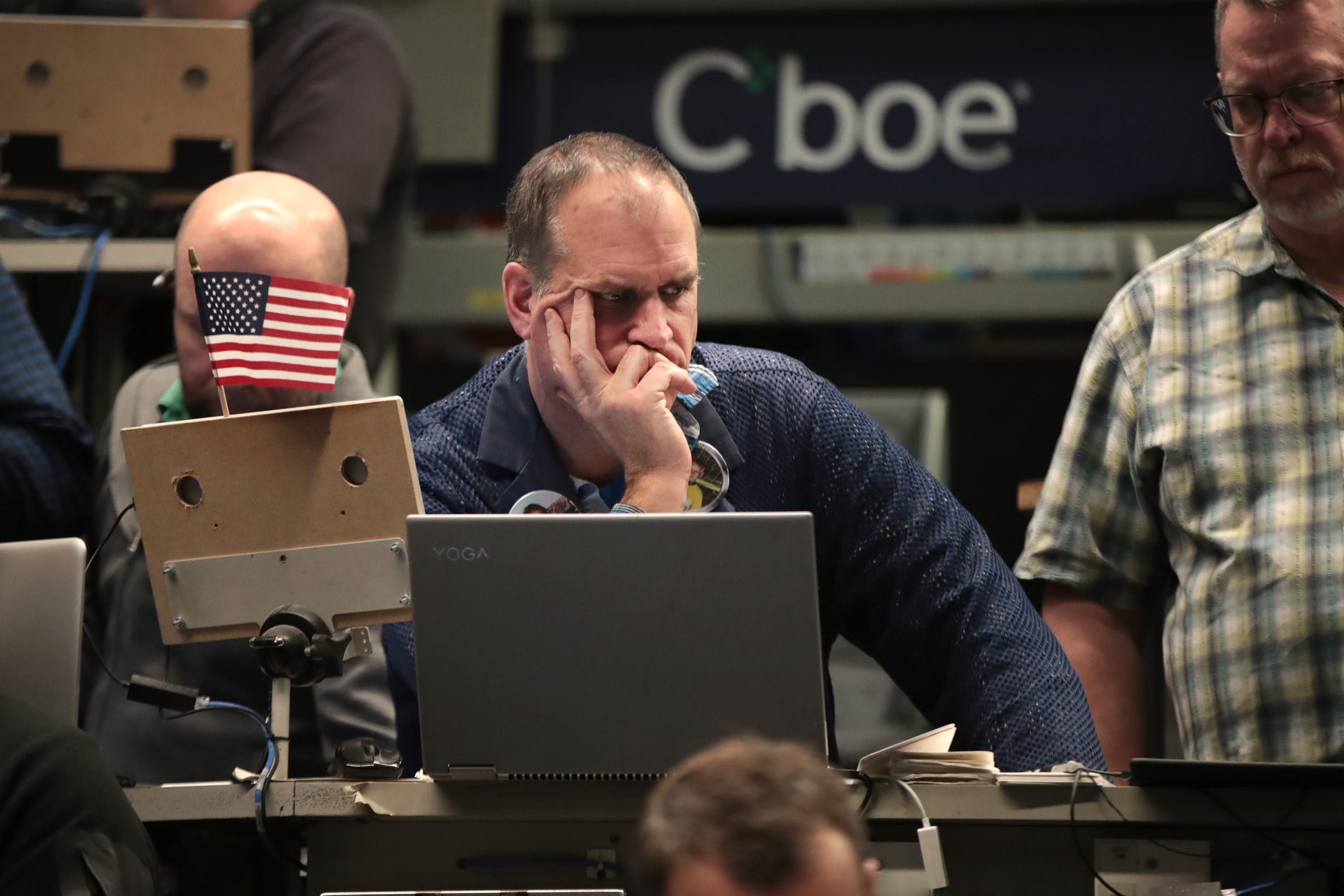
Now that stocks have entered a bear market, more wild volatility is expected in the week ahead as investors await a big policy move by the Federal Reserve.
The Federal Reserve meets Tuesday and Wednesday and is expected by some economists to take its benchmark federal funds target range back to zero, as the economy looks more and more like it could fall into a recession, due to the impact of the coronavirus.
In the past week, the market was sharply lower but swung wildly in both directions, including the stunning 10% decline in the Dow Thursday, the worst one-day drop since the 1987 market crash followed by Friday’s 9.3% gain, the best day in more than 11 years.
The S&P 500 ended up 9.3% Friday at 2,711, its best day since Oct. 28, 2008. The S&P is now 20.2% below its February high.
Strategists say the market purge is not over, though it could be closer to a bottom, with some expecting the S&P 500 to fall through 2,400 before it finds a floor.
“You could say we’re pricing a garden variety recession,” said Lori Calvasina, chief U.S. equities strategist at RBC. “We come up with a range of 2,300 to 2,600 as recession territory.” She said the average drop during a recession, since the 1930s, was 32%. The S&P had been as much as 29% off its Feb. 19 high.
“If [S&P] went below 2,300, it would be telling you the market is pricing in something worse than a recession, In the financial crisis we lost 57% and in the tech bubble, we lost 49%,” said Calvasina.
The S&P 500 was down 8.9% for the week, its worst loss since the week of Feb. 28.
“I think we needed to get through this week, in particular — the one where the country went into shut down and now get the second go around of policy response. If they really do bring out the bazookas we should be darn close” to the bottom, said Barry Knapp, Ironsides Macroeconomics director of research.
But strategists also point out that the coronavirus is unpredictable and it is hard to say when it will peak, even though many economists expect a bounce back in economic growth by the fourth quarter.
President Donald Trump declared a state of emergency Friday, which allows him to tap federal agencies to provide emergency funds and other responses to the crisis. The president also announced the government would buy oil to fill the Strategic Petroleum Reserves and that 1.4 million test kits would be available in the next week.
Markets will also be looking for further action, which the Trump administration says could include targeted financial aid to industries that are hard hit, like airlines.
As communities around the country attempt to stop the spread of the virus, the potential hit to the economy grows. Companies have told workers to work from home, universities are shutting campuses, a handful of states closed public schools, and major sporting and other events have been canceled.
“If it indeed is declared a recession, it will really only be a three-month drop in activity,” said Knapp. “In 2008, the household sector had the highest debt levels it ever had, and the household sector was in no position to respond to stimulus. This is quite different.”
“We see where are are today is pricing in a recession. It went from a growth scare down to recession territory,” said Calvasina. She said the market is not ready to move higher yet. “I think something else we’ve got to see in addition to extreme panic ratings from the sentiment indicators, we do need to see the news flow get better on the virus.”
Investors will continue to look for more action from Washington, and in the coming week it will also be the Fed’s policy response that could drive the market.
“In light of the continued growth in coronavirus cases in the US and globally, the sharp further tightening in financial conditions, and rising risks to the economic outlook, we now expect the FOMC to cut the funds rate 100bp on March 18, a faster return to the crisis-era 0-0.25% rate than under our previous call for two 50bp steps in March and April,” Goldman economists wrote.
The Fed on Thursday announced a significant increase in funds available for its repo operations, to provide liquidity for the short term funding markets. It also said it would purchase a broad range of Treasury securities, across maturities, with the $60 billion it currently uses to buy Treasury bills on a monthly basis.
Economists say the Fed could announce other policy moves, like purchases of mortgage securities. Some expect it to return to a “patient” stance, showing a willingness to keep rates extremely low for a long time.
Analysts have been watching the corporate bond market, where spreads blew out dramatically in the past week, particularly in high yield. Calvasina said she is not yet concerned.
“We’ve got problems in energy. We have problems in some hospitality related industries. There are pockets of stress, but for me, when I look across most S&P companies’ balance sheets are in really good shape,” Calvasina said. “I don’t think this is a prolonged sort of downturn.”

